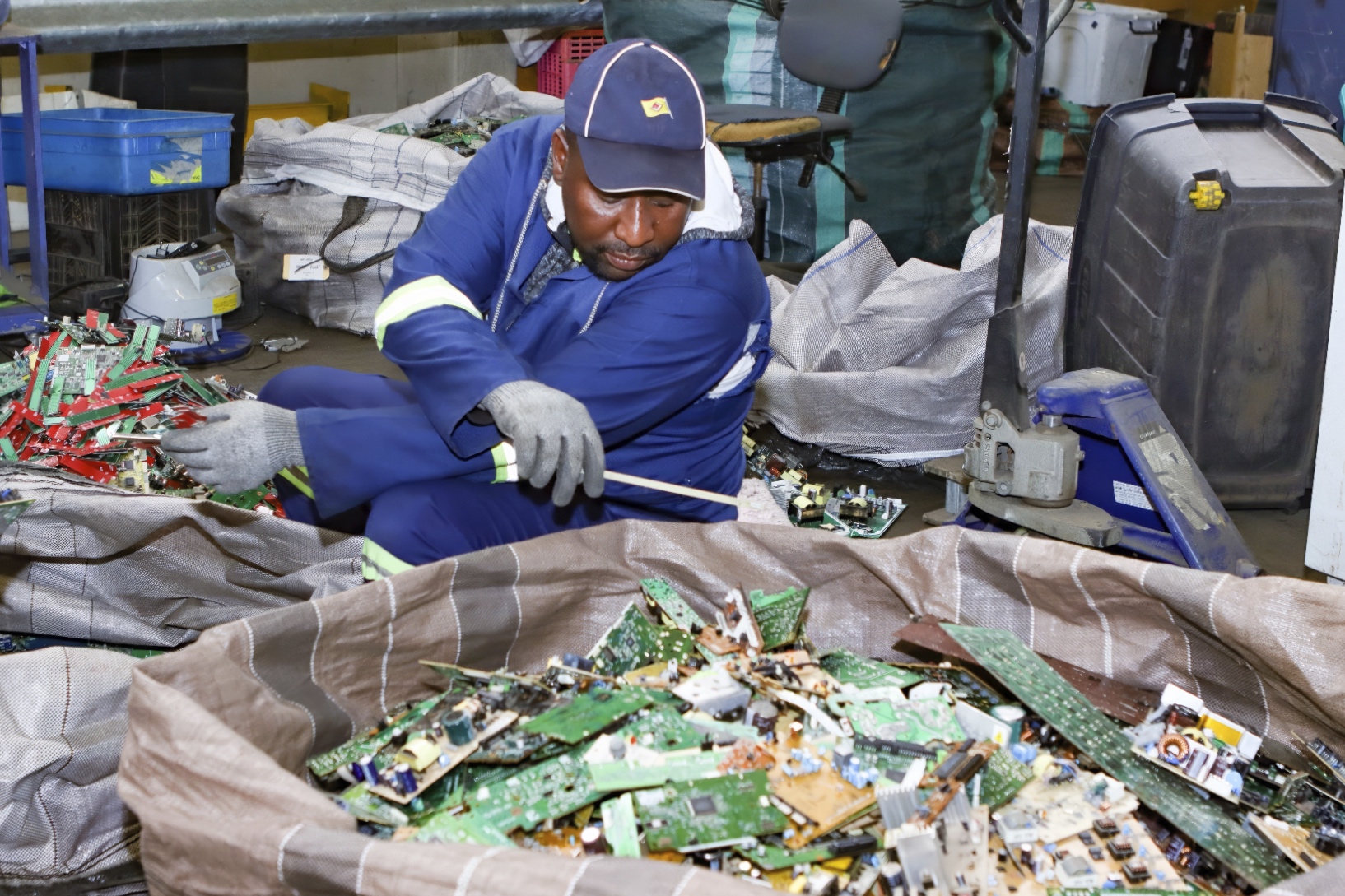Fridge and WEEE Recycling in AU/NZ
Fridge and WEEE Recycling in AU/NZ
Refrigerators & WEEE Recycling in Australia: An updated review

Introduction
The rapid advancement of technology has led to an increase in the consumption of electrical and electronic equipment (EEE) worldwide. In Australia, the management of waste electrical and electronic equipment (WEEE), including refrigerators (fridges), has become a critical environmental and economic issue. Effective recycling of these products is essential to recover valuable materials, reduce environmental hazards, and promote sustainability. As suppliers of products and systems to the WEEE recycling industry in Australia, we provide an in-depth analysis of the current state of the industry, highlight significant projects, and explore future directions.
The Importance of Fridge and WEEE Recycling
Environmental Concerns
- Hazardous Materials: WEEE contains hazardous substances such as lead, mercury, cadmium, and flame retardants, which can harm the environment and human health if not properly managed.
- Greenhouse Gases: Refrigerators and air conditioners contain refrigerants like chlorofluorocarbons (CFCs) and hydrochlorofluorocarbons (HCFCs) that are potent greenhouse gases.
- E-Waste Growth: The volume of e-waste is rapidly increasing due to technological advancements and shorter product life cycles.
Resource Recovery
- Valuable Materials: WEEE contains precious metals like gold, silver, and platinum, as well as other recyclable materials such as copper, aluminum, and plastics.
- Circular Economy: Recycling supports a circular economy by recovering materials for reuse, reducing the need for virgin resources.
Current State of Fridge and WEEE Recycling in Australia
E-Waste Generation and Recycling Rates
- E-Waste Volume: Australia generates approximately 550,000 tonnes of e-waste annually.
- Recycling Rate: As of 2023, about 40% of e-waste is recycled, indicating significant potential for improvement.
- Fridges and Cooling Appliances: An estimated 2 million fridges and freezers reach end-of-life each year in Australia.
Regulatory Framework
- National Television and Computer Recycling Scheme (NTCRS): Established in 2011, it mandates manufacturers and importers to fund the collection and recycling of televisions and computers.
- Product Stewardship Act 2011: Provides a framework for managing the environmental, health, and safety impacts of products, including WEEE.
- Upcoming Regulations: Discussions are underway to expand the NTCRS to include additional e-waste categories, such as small appliances and solar panels.
Infrastructure and Capacity
- Recycling Facilities: Australia has numerous WEEE recycling facilities equipped with advanced technologies for material recovery.
- Collection Systems: Collection points include retail take-back programs, municipal collection centers, and special e-waste collection events.
As suppliers to this industry, we provide essential equipment and systems that enhance the efficiency and capacity of these facilities, contributing to technological advancement and increased recycling rates.
The Fridge and WEEE Recycling Process
- Collection: WEEE is collected from households, businesses, and municipal facilities through various programs and initiatives.
- Transportation: Collected items are transported to recycling facilities while ensuring safe handling of hazardous materials.
- Sorting and Pre-Processing:
- Manual Dismantling: Removal of hazardous components (e.g., batteries, capacitors) and valuable parts.
- Shredding: Mechanical shredding of appliances to break them down into smaller pieces.
- Material Separation:
- Magnetic Separation: Removes ferrous metals using magnets.
- Eddy Current Separation: Separates non-ferrous metals like aluminum and copper.
- Optical Sorting: Uses sensors to sort plastics by type and color.
- Refrigerant Recovery:
- Degassing: Safe extraction of refrigerants from fridges and air conditioners to prevent atmospheric release.
- Processing and Refining:
- Metal Recovery: Metals are melted and refined for reuse.
- Plastic Recycling: Plastics are processed into pellets for manufacturing new products.
- Glass Recovery: Glass components are cleaned and recycled.
Our products and systems are integral at various stages of this process, particularly in sorting, separation, and refrigerant recovery operations, where efficiency and precision are crucial.
Benefits of Fridge and WEEE Recycling
Environmental Benefits
- Hazardous Substance Management: Prevents the release of toxic substances into the environment.
- Greenhouse Gas Reduction: Proper refrigerant recovery reduces emissions of potent greenhouse gases.
- Resource Conservation: Recovers valuable materials, reducing the need for mining and raw material extraction.
- Energy Savings: Recycling metals and plastics consumes less energy than producing them from virgin materials.
Economic Benefits
- Job Creation: Supports employment in collection, processing, manufacturing, and research sectors.
- Market Development: Stimulates markets for recycled materials and products.
- Cost Savings: Provides cost-effective raw materials for various industries.
By supplying advanced equipment and systems, we contribute to amplifying these benefits, enabling the industry to operate more sustainably and economically.
Challenges Facing the Industry
Technical Challenges
- Complex Product Design: Modern electronics have complex designs with mixed materials, making recycling more difficult.
- Miniaturization: Smaller devices with tightly packed components are harder to disassemble and recycle.
- Hazardous Materials: Safe handling and disposal of hazardous substances require specialized equipment and procedures.
Our advanced technologies address these challenges by improving material separation accuracy and ensuring safe processing of hazardous components.
Collection and Participation
- Consumer Awareness: Lack of awareness about e-waste recycling options leads to low collection rates.
- Convenience: Limited access to collection points can discourage consumers from recycling.
Regulatory and Compliance Issues
- Incomplete Legislation: Current regulations may not cover all types of WEEE, leaving gaps in the recycling system.
- Enforcement: Ensuring compliance with regulations across the industry is challenging.
Economic Constraints
- Cost of Recycling: High costs associated with recycling processes can affect profitability.
- Market Fluctuations: Prices for recycled materials can be volatile, impacting the economic viability of recycling operations.
Government Initiatives and Policies
Expansion of Product Stewardship Programs
- Review of the NTCRS: The government is considering expanding the scheme to include more types of e-waste, such as small appliances, photovoltaic panels, and batteries.
- Product Stewardship Centre of Excellence: Established to promote best practices and support the development of product stewardship schemes.
State and Territory Regulations
- Landfill Bans: Some states, like Victoria and South Australia, have implemented bans on e-waste disposal in landfills.
- Collection Programs: Local governments run e-waste collection events and provide drop-off facilities.
Funding and Support
- Recycling Modernisation Fund: The federal government has allocated funds to upgrade and expand recycling infrastructure.
- Grants and Incentives: Support for businesses investing in recycling technologies and facilities.
These policies promote the growth of the WEEE recycling industry, creating opportunities for suppliers like us to support expanding infrastructure needs.
Highlighting Significant Projects in Australia
TechCollect
- Overview: TechCollect is a nationwide e-waste recycling program funded by leading technology companies.
- Achievements:
- Collected and recycled over 150,000 tonnes of e-waste since inception.
- Operates collection sites across Australia, providing free recycling services to the public.
- Impact: TechCollect plays a significant role in increasing e-waste recycling rates and raising public awareness.
TES Australia
- Overview: TES is a global leader in IT lifecycle services with operations in Australia focusing on secure and sustainable e-waste recycling.
- Facilities:
- Advanced processing centers equipped with cutting-edge technology for data destruction and material recovery.
- Services:
- Provides IT asset disposition (ITAD), recycling, and remarketing services.
- Contribution: TES enhances resource recovery and supports a circular economy by extending the life of electronic devices.
MRI e-cycle Solutions
- Overview: MRI e-cycle Solutions offers comprehensive e-waste recycling services, including fridges and large appliances.
- Capabilities:
- Operates specialized facilities for refrigerant recovery and hazardous material handling.
- Initiatives:
- Partners with retailers and manufacturers for take-back programs.
- Significance: MRI contributes to environmental protection by safely processing hazardous components and recovering valuable materials.
Reverse E-Waste
- Overview: A social enterprise focusing on responsible e-waste recycling while providing employment opportunities.
- Programs:
- Community collection events and partnerships with local councils.
- Impact:
- Diverts e-waste from landfills and promotes social inclusion through job creation.
Our collaboration with these and other projects involves supplying state-of-the-art equipment and systems that enhance processing efficiency, safety, and environmental performance.
Innovations and Future Prospects
Technological Advancements
- Advanced Sorting Technologies:
- Robotics and AI: Use of artificial intelligence and robotics for precise sorting and dismantling of e-waste.
- Sensor-Based Sorting: Implementation of optical, X-ray, and laser technologies to identify and separate materials.
- Chemical and Biological Recovery:
- Urban Mining: Developing processes to extract precious metals using environmentally friendly methods.
- Bioleaching: Using microorganisms to recover metals from electronic waste.
Our commitment to innovation ensures that we offer the latest technologies to recycling facilities, enhancing efficiency and environmental outcomes.
Circular Economy Initiatives
- Design for Environment (DfE):
- Encouraging manufacturers to design products that are easier to recycle, repair, and upgrade.
- Extended Producer Responsibility (EPR):
- Policies that hold producers accountable for the end-of-life management of their products, promoting sustainable practices.
Market Development
- Secondary Raw Materials Market:
- Developing markets for recycled metals, plastics, and other materials recovered from WEEE.
- Upcycling and Reuse:
- Promoting the refurbishment and resale of electronic devices to extend their lifecycle.
Industry Collaboration
- Partnerships:
- Collaboration between government entities, industry players, and research institutions is crucial for advancing technology and expanding markets.
- Investment in R&D:
- Increased funding for research and development to improve recycling processes and develop innovative applications for recycled materials.
We actively participate in industry collaborations and invest in research and development to contribute to the industry’s sustainable future.
Where From Here: The Future of Fridge and WEEE Recycling in Australia
The fridge and WEEE recycling industry in Australia is poised for significant growth and innovation:
- Policy Expansion: Anticipated expansion of product stewardship schemes will increase recycling obligations and opportunities.
- Technological Innovation: Advancements in processing technologies will improve efficiency, safety, and environmental performance.
- Consumer Engagement: Increased public awareness and convenience will boost collection rates.
- Sustainability Goals: Aligning with national and global sustainability objectives, the industry will contribute significantly to reducing environmental impacts.
As suppliers to the WEEE recycling industry, we are dedicated to supporting these advancements by providing state-of-the-art products and systems that enhance efficiency, ensure safety, and contribute to the industry’s overall growth.
Conclusion
Fridge and WEEE recycling in Australia is essential for environmental protection, resource conservation, and sustainable development. While progress has been made, challenges such as low recycling rates, technical complexities, and regulatory gaps remain.
By addressing these challenges through technological innovation, policy support, and industry collaboration, Australia can enhance its WEEE recycling performance, benefiting both the environment and the economy. We remain committed to supporting the industry through our advanced products and systems, contributing to a more sustainable future.
References
- Department of Climate Change, Energy, the Environment and Water. (2023). E-Waste in Australia. Retrieved from www.dcceew.gov.au
- Australian Bureau of Statistics. (2022). Waste Account, Australia. Retrieved from www.abs.gov.au
- Product Stewardship Centre of Excellence. (2023). Product Stewardship Schemes. Retrieved from www.stewardshipexcellence.com.au
- TechCollect. (2023). Program Information and Impact Reports. Retrieved from www.techcollect.com.au
- TES Australia. (2023). Sustainable IT Solutions. Retrieved from www.tes-amm.com
- MRI e-cycle Solutions. (2023). E-Waste Recycling Services. Retrieved from www.mri.com.au
- Reverse E-Waste. (2023). Community Recycling Initiatives. Retrieved from www.reverseewaste.com.au
- Sustainability Victoria. (2023). E-Waste Ban and Recycling Information. Retrieved from www.sustainability.vic.gov.au


